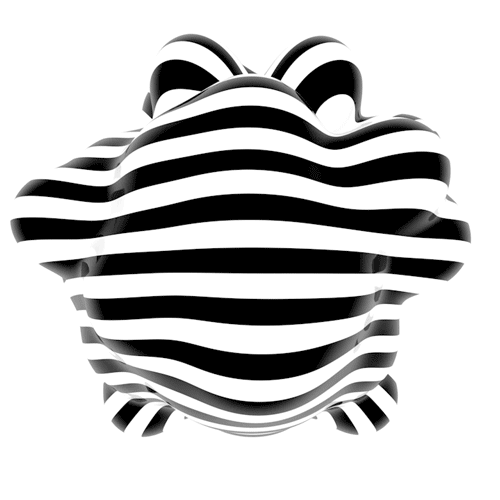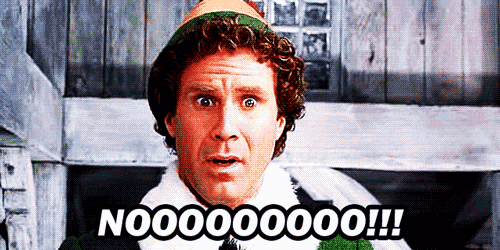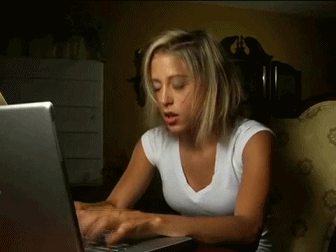Navigation
Theory
Pedagogy of Materiality
The material experience of working with writing tools played a central role in
both of our approaches to two different kinds of classes. Horner (2000) sees
composition in the context of “work” that suggests
simultaneously “an activity, the product of that activity, and the
place of its practice” (p. 3). Looking at composition through this
lens, according to Horner, “encourages us to think of what we do as
located materially and historically: as material social practice” and
encourages us to conceive composition as a practice situated in relation to
“other places, activities, and social forces, responding to and
conditioned by them, and shaping them in return” (pp. 3, 4). In both
of our classes, the technologies we asked our students to use were  presented
in the context of historical production. For example, in Josh’s Writing
and Editing in Print and Online (WEPO) class, while students read about the history
of the production of the pencil and a brief history of how writers employed it over time,
students were asked to compose course texts exclusively with a pencil and reflect on the experience of
using this particular writing technology. In Meaghan’s class, the
construction of the Medieval Manuscript Mockup was paired not only
with a discussion of the typical layout and proportions of manuscript pages,
but also with the handling of parchment, practice with a dip pen, and an
expansive exploration of the Bodleian Library’s digital collection. In
this way, students in both classes were better able to see the pencil, the pen, and—in
our final projects, HTML—as tools of both material and historical
circumstances.
presented
in the context of historical production. For example, in Josh’s Writing
and Editing in Print and Online (WEPO) class, while students read about the history
of the production of the pencil and a brief history of how writers employed it over time,
students were asked to compose course texts exclusively with a pencil and reflect on the experience of
using this particular writing technology. In Meaghan’s class, the
construction of the Medieval Manuscript Mockup was paired not only
with a discussion of the typical layout and proportions of manuscript pages,
but also with the handling of parchment, practice with a dip pen, and an
expansive exploration of the Bodleian Library’s digital collection. In
this way, students in both classes were better able to see the pencil, the pen, and—in
our final projects, HTML—as tools of both material and historical
circumstances.
Specifically, Josh employed Hayles’ (2002) Writing Machines, drawing from her definition of “materiality” as a key term that the class revisited each week as students worked with different writing tools. She sees texts as formulated via “material metaphors” that highlights the “traffic between words and physical artifacts” (p. 22). As Hayles emphasizes, and what formed the basis for our two different courses, is that “to change the physical form of the artifact is not merely to change the act of reading. . . but profoundly to transform the metaphoric network structuring the relation of word to world. . . . To change the material artifact is to change the context and circumstances for interacting with the words, which inevitably changes the meanings of the words as well” (p. 23). By asking our students to reflect on the experience of working with different writing machines, including the affordances and constraints each tool offered, and what kinds of texts they were able to produce with them, we sought to help students see the production of texts as a practice embedded in particular material and historical circumstances.
In “The Medium is Message” (1964, 2006), McLuhan
envisioned media as a kind
of “constellation” in which “the
‘content’ of any medium is always another medium”
(p. 8). Similarly, Bolter and Grusin define remediation as “the
representation of one medium in another,” arguing that
remediation is a “defining characteristic” of digital media (p. 45).
GIFs represent multiple layers of remediation; as frequent remediations of film and
television, they function within student texts as a hybrid of still images
and independant movie clips, contributing referential information to
contextualize the student narrative. Bolter and Grusin conceive of remediation
as comprised of competing “double logics”: a logic of
media as a kind
of “constellation” in which “the
‘content’ of any medium is always another medium”
(p. 8). Similarly, Bolter and Grusin define remediation as “the
representation of one medium in another,” arguing that
remediation is a “defining characteristic” of digital media (p. 45).
GIFs represent multiple layers of remediation; as frequent remediations of film and
television, they function within student texts as a hybrid of still images
and independant movie clips, contributing referential information to
contextualize the student narrative. Bolter and Grusin conceive of remediation
as comprised of competing “double logics”: a logic of “transparent immediacy” but also
“hypermediacy,” a counter-logic that “acknowledges
multiple acts of representation and makes them visible” (pp. 33–34).
As one student explained her experience of the remediation process,
“It is not that often that one will see Will Ferrell and the young
ladies from Toddlers in Tiaras in collaboration, let alone used to depict
the imagery of the Wife of Bath[’s] Tale.” The hypermediated
experience of coding with GIFs encourages students to draw from widely disparate
sources to create layers of representation, helping students navigate the
tensions in remediation through what they see as novel juxtapositions.
“transparent immediacy” but also
“hypermediacy,” a counter-logic that “acknowledges
multiple acts of representation and makes them visible” (pp. 33–34).
As one student explained her experience of the remediation process,
“It is not that often that one will see Will Ferrell and the young
ladies from Toddlers in Tiaras in collaboration, let alone used to depict
the imagery of the Wife of Bath[’s] Tale.” The hypermediated
experience of coding with GIFs encourages students to draw from widely disparate
sources to create layers of representation, helping students navigate the
tensions in remediation through what they see as novel juxtapositions.
Employing the process of remediation in the classroom can be one of the most
productive means of focusing student attention on the significant properties of
specific texts in various media. The result shows what McLeod (1991) termed
“transformission,” the way in which all texts are
transformed as they are transmitted (p. 246). In the process of transformission,
the creator of the new textual form makes decisions about what significant
properties to preserve  from the old form, what elements of the object count as
“information,” and what opportunities the new form can offer
for the interpretation and expression of the text. Kirschenbaum (2006) has
argued persuasively for the importance of examining and teaching digital
transformission as a process in the literature and history of text classroom,
noting that “through these hands-on methods, students become critical
consumers of information; they learn not to take an interface for granted, to
ask why a Web page (or a printed page) was designed and presented in a
particular way, and—perhaps most importantly—they learn how
(and why) to compare multiple representations (often in multiple media) of the
‘same’ text and to appreciate the differences that
distinguish them” (p. 159).
from the old form, what elements of the object count as
“information,” and what opportunities the new form can offer
for the interpretation and expression of the text. Kirschenbaum (2006) has
argued persuasively for the importance of examining and teaching digital
transformission as a process in the literature and history of text classroom,
noting that “through these hands-on methods, students become critical
consumers of information; they learn not to take an interface for granted, to
ask why a Web page (or a printed page) was designed and presented in a
particular way, and—perhaps most importantly—they learn how
(and why) to compare multiple representations (often in multiple media) of the
‘same’ text and to appreciate the differences that
distinguish them” (p. 159).
Maker’s and Tinker’s Traditions: Pedagogies of Creating and Curating
In book history classrooms, studying the craft of creating textual objects,
scientific instruments, and other knowledge-devices in a number of cultural and
historical contexts often leads to pedagogies that emphasize hands-on
production: classroom (or library, or studio) activities that emulate or recreate
the technologies of composition and production to help students understand the
form and presentation of the resulting object. Although this is sometimes done
through demonstrations and digital simulations,1
Shep (2006) argues that “passive looking is not enough; students
need to consolidate and apply their visual understanding by acts of doing and
making” (p. 39). An important aspect of the EWM major is assisting
students to envision themselves as makers of discursive objects, not
simply consumers. The study of the processes of making textual objects in both
historical and current practice is, therefore, a strong part of the curriculum.
Doing, as well as theoretical study, is important to this understanding. The
History of Illustrated Texts course is strongly informed by trends in book
history pedagogy which emphasize the importance of experiential knowledge of
book creation. The pedagogical philosophy behind Meaghan’s conception
of this trend in the HoIT classroom is borrowed from a Renaissance model of
knowledge construction termed the “maker’s knowledge
tradition” (Pérez-Ramos, p. 48). This model of Renaissance
thought rejected Aristotle’s division between technê
2
and epistêmê, instead positing a strong correlation
between understanding the construction of an object and understanding the
object. As Spiller (2009) explains, this knowledge tradition, which flourished
in guild halls and artisans’ studios, meant that “Being able
to make something was an act of knowledge; knowing something involved knowing
how to make it” (p. 27). Applied to modern pedagogical practices,
providing students a “Maker’s” experience, even in necessarily abridged forms,3
can greatly assist with not only their study of the processes of
composition and book creation, but also their understanding of the object that
results from these processes by allowing students to experience a craft
kinesthetically as well as visually.
this is sometimes done
through demonstrations and digital simulations,1
Shep (2006) argues that “passive looking is not enough; students
need to consolidate and apply their visual understanding by acts of doing and
making” (p. 39). An important aspect of the EWM major is assisting
students to envision themselves as makers of discursive objects, not
simply consumers. The study of the processes of making textual objects in both
historical and current practice is, therefore, a strong part of the curriculum.
Doing, as well as theoretical study, is important to this understanding. The
History of Illustrated Texts course is strongly informed by trends in book
history pedagogy which emphasize the importance of experiential knowledge of
book creation. The pedagogical philosophy behind Meaghan’s conception
of this trend in the HoIT classroom is borrowed from a Renaissance model of
knowledge construction termed the “maker’s knowledge
tradition” (Pérez-Ramos, p. 48). This model of Renaissance
thought rejected Aristotle’s division between technê
2
and epistêmê, instead positing a strong correlation
between understanding the construction of an object and understanding the
object. As Spiller (2009) explains, this knowledge tradition, which flourished
in guild halls and artisans’ studios, meant that “Being able
to make something was an act of knowledge; knowing something involved knowing
how to make it” (p. 27). Applied to modern pedagogical practices,
providing students a “Maker’s” experience, even in necessarily abridged forms,3
can greatly assist with not only their study of the processes of
composition and book creation, but also their understanding of the object that
results from these processes by allowing students to experience a craft
kinesthetically as well as visually.
While maker’s knowledge practices are considered historically in terms
of the craftwork involved in book and instrument creation, the modern equivalent
of the concept includes student work on digital projects as well as traditional
book arts. In fact, although using different terminology and not directly
referencing maker’s knowledge, many theorists in composition and rhetoric
advocate much the same practice with digital technology. In his
Multiliteracies for a Digital Age, Stuart Selber articulates a
three-part framework of functional literacy, critical literacy, and rhetorical
literacy, all of which is grounded in “doing and making.”
Functional literacy, for Selber, aims to “encourage productive and
efficient computer use” (p. 72). Grounded in the crafts of book and
instrument production, which educated members through the apprenticeship system,
maker’s knowledge traditions stress the passage of
craftwork involved in book and instrument creation, the modern equivalent
of the concept includes student work on digital projects as well as traditional
book arts. In fact, although using different terminology and not directly
referencing maker’s knowledge, many theorists in composition and rhetoric
advocate much the same practice with digital technology. In his
Multiliteracies for a Digital Age, Stuart Selber articulates a
three-part framework of functional literacy, critical literacy, and rhetorical
literacy, all of which is grounded in “doing and making.”
Functional literacy, for Selber, aims to “encourage productive and
efficient computer use” (p. 72). Grounded in the crafts of book and
instrument production, which educated members through the apprenticeship system,
maker’s knowledge traditions stress the passage of knowledge through demonstration and personal trial. Similarly,
for Selber, treating computer use under this paradigm “can help
inculcate in [students] a sense of control over technology, as well as a sense
of the professional responsibilities that might go along with using
technological environments” (p. 44). Both pedagogical approaches are in dialogue
with professional practices. Students are not expected, however, to be professionals at
this early stage. The expectation and ability to
fail inherent in exploring a craft for the first time means that emphasis in
these assignments is not be on the creation of a “perfect”
crafted product, but rather on the process of making; failing safely and
overcoming difficulties provides students with a remarkable sense of
pride and ownership over their own discoveries.
knowledge through demonstration and personal trial. Similarly,
for Selber, treating computer use under this paradigm “can help
inculcate in [students] a sense of control over technology, as well as a sense
of the professional responsibilities that might go along with using
technological environments” (p. 44). Both pedagogical approaches are in dialogue
with professional practices. Students are not expected, however, to be professionals at
this early stage. The expectation and ability to
fail inherent in exploring a craft for the first time means that emphasis in
these assignments is not be on the creation of a “perfect”
crafted product, but rather on the process of making; failing safely and
overcoming difficulties provides students with a remarkable sense of
pride and ownership over their own discoveries.
The maker’s tradition emphasizes craft as embedded in particular historical contexts, and this connects to the second part of Selber’s framework, critical literacy, which focuses on developing awareness and critique of “the politics of computers,” aiming “to both expose biases and provide an assemblage of cultural practices” (pp. 75, 81). In particular, Selber sees computers as cultural artifacts, as “material products of human activity and agency,” but also manifestations of the “values of disciplines and institutions and individuals” (p. 86–87). The maker’s tradition likewise emphasizes critical reflection on the tools of production and their cultural context, examining power structures inherent in their use and the physical and cultural affordances of specific tools and materials. For both Selber and digital humanists such as Matthew Kirschenbaum (2006), critical literacy through hands-on pedagogy involves teaching students “how things work” (p.155).
Selber’s third component, rhetorical literacy, combines both
functional and critical literacies
to consider “the design and evaluation of online
environments” (p. 182). By encouraging students to become
“reflective producers of technology,” this approach gets at
the heart of the maker’s movement (p. 182). Selber sees rhetorical
literacy as based on “praxis—the thoughtful integration of
functional and critical abilities in the design and evaluation of computer
interfaces” (p. 145). Much like we see in maker’s pedagogy, rhetorical literacy frames
creation as an evaluative process, in which students must consider design,
audience, and functionality as they craft their product. The frustrations of
creating a working web design—parsing error reports and working within
the limitations of specific coding languages’ significant
properties—are more valuable to the students than working with a
familiar interface. Digital composition not only foregrounds the relationship
between tool and text, but highlights how challenges with a tool can drive the
development of texts.
critical literacies
to consider “the design and evaluation of online
environments” (p. 182). By encouraging students to become
“reflective producers of technology,” this approach gets at
the heart of the maker’s movement (p. 182). Selber sees rhetorical
literacy as based on “praxis—the thoughtful integration of
functional and critical abilities in the design and evaluation of computer
interfaces” (p. 145). Much like we see in maker’s pedagogy, rhetorical literacy frames
creation as an evaluative process, in which students must consider design,
audience, and functionality as they craft their product. The frustrations of
creating a working web design—parsing error reports and working within
the limitations of specific coding languages’ significant
properties—are more valuable to the students than working with a
familiar interface. Digital composition not only foregrounds the relationship
between tool and text, but highlights how challenges with a tool can drive the
development of texts.
1 simulations: See, for example, the Fitzwilliam Museum’s “Making Art: Medieval Manuscripts” flash interactive, where the user clicks on various tools and materials to “make” a medieval book.
2 technê: From a strictly Aristotelian perspective, this conflation does not work; craft practices were a praxis, not a method of understanding. Aristotle argues that technê is limited to “a state of capacity to make,” and can tell nothing about the greater world. In Aristotle’s view, “All art [technê] is concerned with coming into being, i.e. with contriving and considering how something may come into being which is capable of either being or not being, and whose origin is in the maker and not in the thing made” while the maker’s knowledge tradition then elaborates that this process of making allows the maker insight into the nature of the object made (Nichomacean Ethics VI:4).
3 necessarily abridged: I try to provide a number of ways of completing these hands-on assignments, as I realize that some students firmly believe they cannot do “artistic” things. While straight ruling was a requirement of the manuscript assignment, images could be added through collage if the student felt sketching was not their strong suit. Students are not graded on artistic merit in any assignment, but rather on demonstrated understanding of the significant properties of the medium.